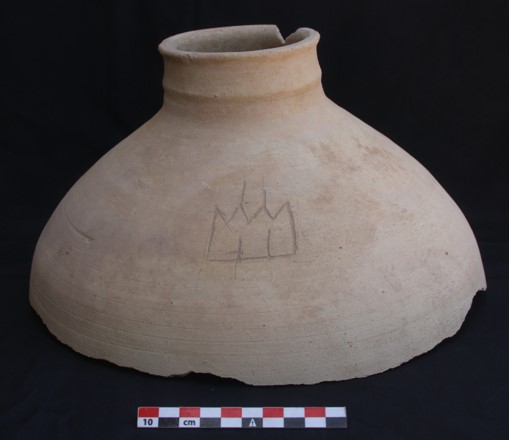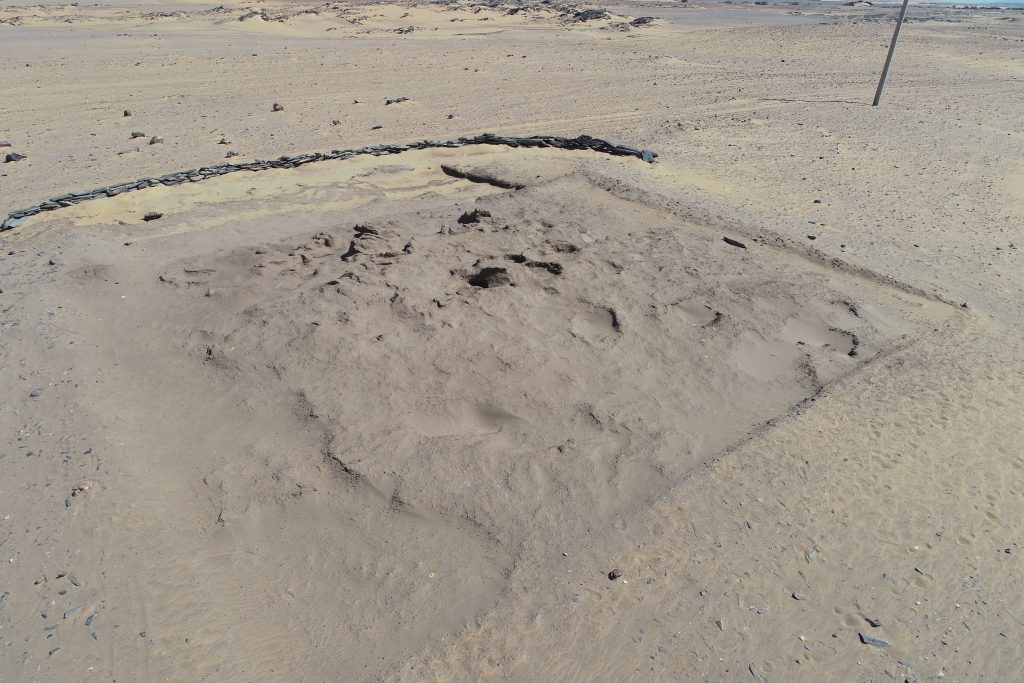I just came back from a very inspiring and extremely enjoyable workshop on Cyprus within the framework of the ERC ComPAS Project. Under the title “Marks, Marketing, and Markets: Investigating the intersection of marking practices and commercial strategies in the Bronze Age and Early Iron Age eastern Mediterranean”, leading scholars discussed the relevance of pot marks, seals, marks on ingots and much more, focusing on the Late Bronze Age. Many thanks go to the organisers Cassandra M. Donnelly and Artemis Georgiou and their wonderful team!
In my own presentation, „The International Age in pharaonic Egypt: aspects of trade, exchange and marking systems“, I focused on the distribution of marked Oases amphorae as well as on the question of pot mark traditions in Nubia.
For me, it is striking that there are no pre-firing marking practices on Nubian ceramics – but a new trend for post-fired marks attested in the Middle Bronze Age on Egyptian imported Marl clay vessels (in C-Group and Kerma contexts). This is for example well illustrated by the upper part of a storage vessel we found last year in the Kerma cemetery GiE 003 at Ginis East: a large post-fired mark was scratched into the Marl clay surface – presumably in Nubia and for sure intended to transmit a code (as well as decorative aspects?).

There is still much research to be conducted on these post-firing pot marks on Egyptian jars found in Nubian contexts – aspects of agency (by whom, where and how was the scratching done) as well as sensory facets (the Egyptian jars have a totally different hardness, colour, and texture than Nubian Nile clay vessels) need to be considered.
Another important aspect of my presentation was the comparison between the pot mark tradition on New Kingdom Sai, Elephantine and in the rural hinterland of Sai, in the MUAFS concession. Here, I got much inspiration from a splendid chapter in an edited volume by Juan Carlos Moreno García with the title “Markets, transactions, and ancient Egypt: new venues for research in a comparative perspective” (Moreno García 2021).
I completely agree with Moreno García (2021) that New Kingdom temple towns in Nubia like Sai were “multifunction centres used, among other purposes, to facilitate contacts between different peoples arrived there to trade, and that some kind of divine sanction at a sacred environment was considered indispensable to formalize the transactions that occurred there.” The last aspect is especially interesting, placing the temples within the towns into a new context – the conversion of the religious landscape of New Kingdom Nubia has already received much attention, but not yet within the framework of trade and transactions. The general role of the temple towns as multifunctional and as trade hubs is well established and was already discussed by several scholars (see Budka 2020, 401, 407 with references as well as passim).
Within New Kingdom Nubia, it is especially relevant to look beyond the colonial towns with their temples, harbours and large-scale storage facilities. This is where the DiverseNile Project steps in and adds much food for thought based on the evidence in the MUAFS concession which is the hinterland of Sai in the 18th Dynasty and of Amara West in the Ramesside era.
Inspired by reading Moreno García’s 2021 chapter, I think it is possible to view the intriguing site AtW 001 from a new perspective. Since 2022, I was convinced that this rural site has something to do with the exchange of goods, especially the distribution of ceramics in 18th Dynasty Nubia (see Budka 2022, as “control posts for trade, gold transport and possibly the communication between hinterland communities and the newly established Egyptian centre on Sai Island”).

Based on the results from the 2023, we could go a bit further and suggest that the “site might well have been linked to seasonal traffic/routes into the desert, possibly in connection with the provision of transport animals and livestock for gold working expeditions” (Budka et al. 2023, 29). In this context, we observed that “The lack of significant architectural remains suggests that AtW 001 was linked to a nearby settlement or temporary, possibly seasonal structures” (Budka et al. 2023, 30). Following ideas by Moreno García, I would now like to add that the lack of substantial architectural remains at AtW 001 could also be explained in a way that the open spaces of the sites were intended to serve travellers and to supervise trade. This would also allow to justify the large number of simple storage pits on the site. With its mix of material culture, including large amounts of Nubian ceramics as well as in-between vessels (see https://www.sudansurvey.gwi.uni-muenchen.de/wp-content/uploads/2023/03/IMG_9979-2048×1536.jpg), the site at Attab West could indeed have functioned as a seasonal market and a meeting place for various groups, including mobile communities.
All in all, New Kingdom Nubia seems to be an excellent case study for state-built meeting points and trade centres like Sai and other temple towns, but also for seasonal and occasional markets as illustrated by AtW 001 – the latter stressing the importance of semi-nomadic and nomadic groups when we talk about the exchange of commodities. These various types of markets and most importantly the diverse communities being involved are likely to be the keys for understanding the multiple use of marking systems we find in New Kingdom Egypt and Nubia.
References
Budka 2020 = J. Budka, AcrossBorders 2. Living in New Kingdom Sai. Archaeology of Egypt, Sudan and the Levant 1. Vienna: Austrian Academy of Sciences Press, 2020.
Budka 2022 = J. Budka, Early New Kingdom settlement activities in the periphery of Sai Island: towards a contextualisation of fresh evidence from Attab West, MittSAG – Der Antike Sudan 33, 2022, 45‒61.
Budka et al. 2023 = J. Budka, K. Rose & C. Ward, Cultural diversity in the Bronze Age in the Attab to Ferka region: new results based on excavations in 2023, MittSAG – Der Antike Sudan 34, 2023, 19−35.
Moreno García 2021 = J.C. Moreno García, Markets, transactions, and ancient Egypt: new venues for research in a comparative perspective. In Moreno García, Juan Carlos (ed.), Markets and exchanges in pre-modern and traditional societies, 189−229. Oxford; Philadelphia: Oxbow Books, 2021.
